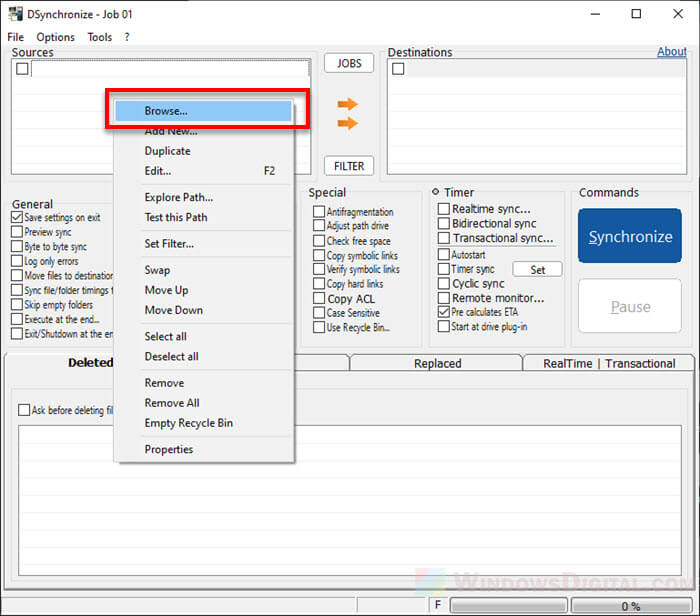

- #Sync folders between 2 computers over internet install#
- #Sync folders between 2 computers over internet update#
- #Sync folders between 2 computers over internet archive#
- #Sync folders between 2 computers over internet software#
- #Sync folders between 2 computers over internet password#
CiraSync is a secure, Azure-based SaaS platform that is centrally managed, requires no software to install, no user training, and can scale to thousands of business smartphones.
#Sync folders between 2 computers over internet install#
Install on phone: Google Play 7.For simple "syncing" of email, choose an IMAP email account if your email provider supports it. See this video tutorial for adding a folder for synchronization. A notification appears on remote device to add new device. On the remote device, go to Actions->Show ID, copy the string, and on each local device click on Add remote device and paste string in Device ID. This is obeyed even when global discovery and/or local discovery is enabled in settings, which allows Syncthing to find addresses for configured devices but will only attempt connections as permitted. This is set per device from Actions->Advanced->Defaults->Default Device->Allowed Networks.Įxample: To restrict sync to my LAN, I enter 192.168.1.0/24 (for IPv4). The Allowed Networks feature can restrict syncing to only occur through specific subnets. I find it desirable to only sync between devices from inside my LAN. Optional: Allowed networksīy default, Syncthing identifies every device with a unique ID and syncing works between devices both inside the LAN and - courtesy of UPnP - over the Internet.
#Sync folders between 2 computers over internet password#
Go to Settings-GUI and add a username and password to the web interface. Remote host is now accessible at port :8384. 4.2 Remote hostīy default, we can't connect to the GUI running on a remote computer (program is only listening for connections from 127.0.0.1).Īllow connections to the GUI from network devices by logging into the remote computer, then editing ~/.config/syncthing/config.xml. Go to Actions->Settings->GUI and add a username and password to the web interface. On the local device, access the Syncthing GUI via the following URL: $ sudo systemctl enable -now systemctl status default folder for synchronization - ~/Sync - is created. $ sudo chown root: sudo mv /etc/systemd/systemĮnable and start Syncthing for your username (example: foo). On each computer, setup a systemd unit to automate the startup.Īdd the systemd service.
#Sync folders between 2 computers over internet update#
$ sudo apt update & sudo apt install syncthing $ printf "Package: *\nPin: origin \nPin-Priority: 990\n" | sudo tee /etc/apt/preferences.d/syncthing.pref Set a preference for Syncthing's packaged version vs Debian's package. $ echo "deb syncthing stable" | sudo tee /etc/apt//syncthing.list $ sudo curl -o /usr/share/keyrings/syncthing-archive-keyring.gpg Īdd the stable channel to the package manager. Use the latest stable version of Syncthing on Debian by retrieving the package from .Īdd the release PGP keys. My home setup is a star layout that is, I have multiple devices running Debian - each with Syncthing installed - that exchange data with a central home server.Įxample: After travelling and working with my laptop, I return home and - when my laptop connects to the LAN - any file changes are synced with the server, which in turn syncs with the desktop. It synchronizes files between multiple computers in real time. Syncthing is a continuous file synch program. These are my notes from this Youtube tutorial.
#Sync folders between 2 computers over internet archive#
Home → Archive Sync files across all computers using Syncthing Sync files across all computers using Syncthing ☯ Daniel Wayne Armstrong Daniel Wayne Armstrong


 0 kommentar(er)
0 kommentar(er)
